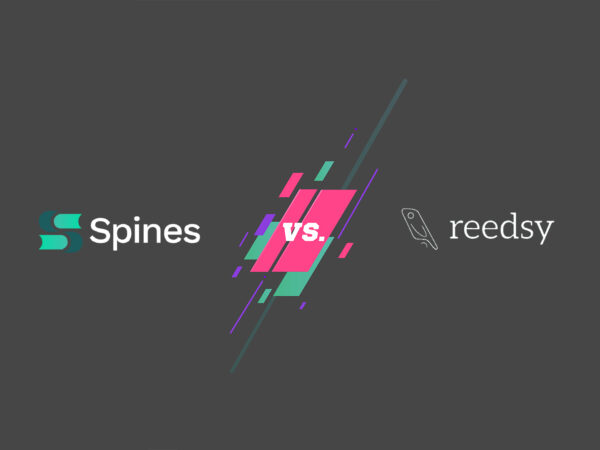In recent years, the publishing landscape has undergone a significant transformation, driven largely by the rise of self-publishing. This model has democratized the process of bringing a book to market, enabling more authors to share their stories directly with readers. Among various genres, memoirs have particularly flourished under this regime. Personal narratives that might not catch the eye of big publishing houses—due to their niche appeal or unconventional storytelling—can now reach an audience without the gatekeeping barriers of traditional publishing.
The transformation of the publishing industry has been markedly influenced by the rise of self-publishing, challenging the traditional publishing landscape and highlighting the work of individuals who have dedicated years to author education and trend reporting within the book publishing industry.
Self-publishing a memoir offers distinct advantages that resonate deeply with authors who wish to tell their own life stories. Perhaps the most compelling is the level of control it affords. Authors retain authority over every element of their book, from the thematic depth and narrative voice to the more practical aspects like cover design, pricing, and marketing strategies. This autonomy is crucial for memoirists, whose works are deeply personal and often rely on an authentic voice to connect with readers.
Furthermore, self-publishing accelerates the journey from manuscript to marketplace, sidestepping the often protracted and discouraging process of finding a literary agent and securing a publishing deal. It also potentially offers higher financial returns, with authors keeping a larger portion of their earnings than they typically would with traditional publishers.
By choosing to self-publish, authors of memoirs not only reclaim the narrative and presentation of their personal journeys but also embrace a direct relationship with their readers. This shift is not just about selling books—it’s about making personal connections and sharing life experiences that might otherwise remain untold.
The Appeal of Self-Publishing Memoirs
Memoirs are a unique genre, deeply rooted in the personal experiences and emotions of the author. Unlike fiction, where creativity is boundless, or academic texts, which are anchored in facts and research, memoirs bridge the subjective and the universal, making the author’s individual truth accessible and relatable to others. This intimate nature of memoirs makes self-publishing an especially appealing option, as it provides memoirists with the freedom to preserve the authenticity of their narratives without compromise.
Unfiltered Storytelling
One of the most significant advantages of self-publishing memoirs is the ability to tell one’s story without filters. Traditional publishers often seek to shape narratives to fit market trends or editorial preferences, which can dilute the author’s voice or alter significant aspects of the narrative. In contrast, self-publishing allows memoirists to maintain the integrity of their original story, ensuring that every detail, no matter how small or personal, is told exactly as they wish.
For instance, John Doe, who self-published his memoir about his journey through grief after losing his spouse, stated, “I wanted to share my story my way, without someone telling me it was too raw or not palatable enough for the market. Self-publishing gave me that freedom, and it’s why the book resonates so well with readers who are going through similar experiences.”
Creative Control and Personalization
The creative control afforded by self-publishing extends beyond just the text. Authors can make decisions about every element of the book’s design, from the cover to the typeset, ensuring that the physical manifestation of the book aligns with their vision. For memoirists, whose books are often a labor of love and a form of legacy, such control is invaluable.
Jane Smith, a self-published author of a memoir detailing her adventures in Asia, explains, “Choosing the cover photo—a snapshot I took myself in Mongolia—made my book feel intensely personal, not just another travel memoir picked out of a lineup. It’s exactly how I wanted my story to be presented.”
Direct Connection with Readers
Self-publishing also enhances the connection between memoirists and their readers. By managing the distribution and marketing themselves, authors can engage directly with their audience, gather feedback, and build relationships without intermediary barriers. This direct engagement is particularly beneficial for memoirs, as the genre often prompts discussions and personal reflections that can deepen the reader’s connection to the author.
Michael Roberts, who documented his career shift from corporate law to wildlife conservation in his memoir, noted, “The emails and comments I get from readers who say they’ve been inspired to pursue their own passions—knowing that wouldn’t have been as direct if a publisher was in the middle.”
Economic and Practical Benefits
Economically, self-publishing memoirs can be more lucrative than traditional publishing routes. Without the need to share profits with a publisher, authors can potentially earn more per book sold, which is particularly appealing for niche memoirs that may not sell in high volumes but cater to a specific, dedicated audience.
Additionally, the speed at which books can be published in the self-publishing model is a critical advantage. Traditional publishing can take years from manuscript acceptance to bookshelf, whereas self-published books can appear in the market as soon as the author is ready. For many memoirists, this timely publication is crucial, especially if the book discusses topical or timely issues.
Navigating Challenges
While the benefits are substantial, self-publishing a memoir does come with its challenges, such as the need for self-promotion and the absence of professional guidance that traditional publishers provide. However, many authors find that the trade-offs are worth the additional effort.
Elizabeth Green, whose memoir covers her experiences with mental health challenges, summarizes this sentiment: “Yes, self-publishing meant I had to learn about marketing and sales, but it was worth it to keep my story true to myself. Every decision was mine, and every word in that book is exactly as I intended.”
In conclusion, self-publishing offers memoirists a platform for personal expression that is unrivaled in its freedom and immediacy. By choosing this route, authors can ensure that their stories are told their way, maintaining the authenticity and personal touch that is so vital to the memoir genre. As the publishing world evolves, self-publishing stands out as a beacon for those wishing to share their life stories on their own terms.
The Self-Publishing Process
Self-publishing a memoir is an empowering journey that transforms a personal story into a publicly available book. With the increasing number of books published annually, the significance of self-publishing has never been more pronounced. This process involves several critical steps, from the inception of the idea through to the finished product being in the hands of readers. Understanding each phase helps ensure the memoir is professionally presented and reaches its intended audience effectively.
The editing process is a cornerstone of publishing, ensuring the manuscript is polished and ready for readers. It involves several stages, including a manuscript critique to assess the overall structure, a comprehensive edit to refine the content and style, a copyedit to correct grammar and consistency issues, and a final proofread to catch any lingering errors. This meticulous approach enhances the book’s quality and reader engagement.
Designing the back cover is as crucial as the front, incorporating elements like a compelling book description, an engaging author bio, and a barcode. These components are vital for marketing and improving the book’s discoverability, making it essential to integrate keywords into the back cover copy to attract the right audience.
Acquiring ISBNs for upcoming book projects is a critical step in the self-publishing process, highlighting the need for different ISBNs for various formats to ensure the book’s availability across multiple sales channels.
In planning the publication date, strategic consideration is key to aligning marketing efforts, securing book reviews, and maximizing the book’s sales potential. This foresight can significantly impact the book’s success in a crowded marketplace.
Conceptualization and Manuscript Development
The first step in self-publishing is the conceptualization of the memoir. This involves not only recalling past experiences but also determining the memoir’s theme, scope, and structure. Writers should ask themselves what the core message of their memoir is and how best to structure the narrative to engage readers effectively.
Once the framework is set, the next phase is manuscript development. This includes writing the initial drafts, where authors pour out their memories, insights, and emotions. It’s essential during this phase to stay focused on the narrative arc and ensure the story flows logically and emotionally connects with the intended audience.
Professional Editing
After the manuscript is completed, the next crucial step is editing. Editing a memoir goes beyond correcting grammar and punctuation. It involves substantive edits to improve clarity, enhance the flow, and ensure the tone is consistent throughout the book. Developmental editing can be particularly beneficial, as it looks at the bigger picture of the memoir, focusing on character development, pacing, and structure.
Hiring a professional editor who has experience with memoirs can make a significant difference in the quality of the final product. Authors should ensure that the editor understands their vision and voice, as preserving these elements is crucial in a memoir.
Cover Design and Formatting
The cover of a memoir is often the first thing potential readers will see, and it plays a crucial role in attracting an audience. The cover should reflect the memoir’s tone and content while being visually appealing. Many self-published authors opt to hire professional designers to ensure their book stands out in a crowded market.
In addition to cover design, formatting the interior of the book is equally important. This includes choosing the typeface, chapter headings, margins, and spacing to ensure the book is easy to read. Both print and digital formats need to be considered, as each has different formatting requirements.
ISBN Acquisition and Copyright Registration
Before publishing, authors need to acquire an ISBN (International Standard Book Number). This unique identifier is necessary for the distribution and sales of the book. Copyright registration, while not mandatory, is recommended to protect the author’s intellectual property.
Choosing the Right Publishing Platform
There are several platforms available for self-publishing, including Amazon’s Kindle Direct Publishing, Barnes & Noble Press, and others like Apple Books and Kobo. Each platform has its advantages and specific requirements, so authors should research and decide which platforms are best suited for their target audience and personal goals.
Distribution and Marketing
Once the memoir is ready for publication, authors must decide on distribution channels. Options include direct sales through personal websites, online retailers, or even local bookstores. Effective distribution is paired with robust marketing to ensure the book reaches its potential readership.
Marketing a memoir can involve a variety of strategies, including social media promotion, email newsletters, blog tours, and perhaps traditional media outreach such as press releases and interviews. Building an author platform before the book launch can significantly impact the overall success of the memoir.
Post-Publication
After the book is published, the work is not entirely done. Post-publication efforts involve monitoring sales, engaging with readers, and potentially updating the book based on reader feedback or additional insights.
Gathering reviews and testimonials is also crucial during this phase, as they can boost the memoir’s visibility and credibility. Authors should encourage readers to leave reviews on platforms where the memoir is sold and consider reaching out to book clubs and reading groups that might be interested in featuring their memoir.
Self-publishing a memoir is a comprehensive process that requires attention to detail, a clear understanding of the market, and a commitment to creating a professional-quality book. By following these steps, authors can successfully share their personal stories with the world, maintaining creative control and potentially reaching a wide audience on their own terms.
Self-Publishing With Spines
Spines is an innovative self-publishing platform that simplifies the process of bringing your memoir or novel from manuscript to readers worldwide. With its intuitive, AI-assisted tools, Spines ensures that every aspect of publishing is accessible, even to those new to the literary world. Spines is the best option for 21st-century writers, offering everything on one platform.
Here’s a straightforward step-by-step guide on how to publish with Spines, ensuring your book is not only well-crafted but also widely accessible.
1. Manuscript Upload
Start your publishing journey by uploading your manuscript to Spines’ user-friendly dashboard. This initial step is more than just a file transfer—it’s the beginning of your book’s public life. You’ll enter details such as the book’s title, author name, subtitle, and category, which are crucial for your book’s identity. Upon uploading, Spines immediately provides a copyright protection certificate, ensuring your work is secure and safeguarded against infringement.
2. Intuitive Cover Design
The cover of your book is its first impression on potential readers. Spines facilitates this critical aspect with an AI-powered cover generator, which allows you to create a compelling cover effortlessly. Whether you’re starting from scratch or have a pre-existing design, Spines’ tools are designed for ease of use, ensuring anyone can design a professional-looking cover without needing technical design skills.
3. Proofreading
Next, Spines’ AI scans your manuscript for grammatical errors and suggests enhancements, acting as a first layer of editing to polish your text. For authors seeking a more human touch, Spines also offers professional proofreading services to ensure your manuscript is thoroughly vetted and ready for publication.
4. Formatting
In the formatting stage, you can customize the interior of your book. Spines offers a variety of formatting styles and options to enhance the visual appeal of your text. Choose the typesetting for your initial paragraphs, select your contributors if any, and decide on the book’s physical attributes, such as cover finish (matte or glossy) and binding (paperback or hardcover).
5. Audiobook Creation
If you opt for an audiobook version, Spines’ state-of-the-art AI comes into play again, creating an audiobook in your chosen voice. This option expands your book’s accessibility and reach, catering to audiences who prefer listening to their literature.
6. Order Your Copies
Once you are satisfied with the digital setup, you can order copies of your book. Specify the quantity and format (eBook, print, or both), and provide your shipping address. Spines handles all the production details, allowing you to relax and look forward to the delivery of your published work.
7. Global Distribution
Finally, your book is set for global distribution. Spines generates optimized metadata for your book, ensuring it reaches a wide array of distribution channels, including major retailers like Amazon and Barnes & Noble. This global reach is vital for attracting a diverse readership and achieving literary success.
By guiding you through each step with advanced tools and professional support, Spines turns the complex process of publishing into a manageable, rewarding journey, allowing you to focus more on your writing and less on the logistics of becoming a published author.
Advantages of Self-Publishing
Self-publishing has emerged as a formidable and attractive option for authors, particularly for those writing memoirs. It offers a range of benefits that can significantly enhance the authorial experience, from the freedom to make creative decisions to the potential for higher financial returns. Here we explore the key advantages of self-publishing your memoir. Planning and executing a marketing campaign is crucial for self-published memoirs, as it ensures the successful promotion and sales of your book.
Complete Control
One of the most compelling benefits of self-publishing is the level of control it offers to authors. This comprehensive authority extends across all aspects of the book’s production and distribution, ensuring that the final product is exactly as the author envisioned.
Content and Narrative: Self-publishing allows memoirists to maintain their authentic voice and the integrity of their narrative. There is no need to alter personal stories to fit market trends or editorial mandates, which is often a requirement in traditional publishing. Authors can present their life stories in a manner that feels true to their experiences and perspectives.
Design and Presentation: Authors can also dictate the aesthetic elements of their book, including cover design, layout, and typesetting. This is particularly important for memoirs, as the cover often needs to resonate with the personal nature of the content. Self-published authors can choose to work directly with designers to create a cover that reflects the tone and theme of their memoir accurately.
Pricing and Marketing: Self-publishing grants authors the ability to set their own price points and adjust them according to market response, which can optimize sales and reach. Furthermore, authors can develop and implement their own marketing strategies, choosing the platforms and promotional tactics that best align with their target audience, rather than relying on a publisher whose marketing efforts may be spread across numerous titles and not tailored to the specific needs of their book.
Speed to Market
The traditional publishing route can be notoriously slow, often taking anywhere from 18 months to several years from manuscript acceptance to publication. In contrast, self-publishing can drastically reduce this timeline.
Streamlined Processes: Once a memoir is written, edited, and formatted, it can be published in a matter of weeks. Self-publishing platforms like Amazon Kindle Direct Publishing allow authors to upload their digital manuscripts and make them available for sale almost instantly. For print copies, print-on-demand services can produce books as orders come in, eliminating long lead times.
Immediate Response to Market Trends: This rapid process not only gratifies the author’s desire to see their work published sooner but also allows them to capitalize on current market trends and public interests. For memoirs, which can often be tied to topical events or personal milestones, timing can be crucial for maximizing impact and relevance.
Higher Royalties
Financially, self-publishing can be more lucrative than traditional routes, primarily because it offers higher royalty rates. This aspect is particularly attractive for authors of memoirs, which may not have the broad market appeal required to secure a lucrative deal with traditional publishers.
Royalty Rates: Traditional publishing typically offers royalties of about 10-15% of the book’s sales, after deducting advances. In contrast, self-publishing platforms like Amazon offer up to 70% of sales in royalties. This substantial difference means that self-published authors can earn more per book sold, making it financially feasible to invest in professional editing, design, and marketing services.
Direct Sales: Furthermore, self-publishing allows authors to sell directly to readers through their own websites or at events, keeping 100% of the profits. This direct-selling model not only increases profits but also helps authors build a loyal readership.
Long-term Earnings: Unlike traditional publishing, where books can be pushed out of print or lose visibility, self-published books remain available as long as the author desires. This perpetual availability can lead to long-term passive income from a memoir, especially as the author’s platform grows and new readers discover their work.
Self-publishing offers significant advantages for authors, particularly those writing memoirs. The complete control over every aspect of the book’s creation and distribution ensures that the story remains true to the author’s vision, both in narrative and presentation. The speed at which books can be brought to market means that memoirs can be published at strategically opportune times, while the higher royalty rates provide financial benefits that are often more favorable than those offered by traditional publishing. For many memoirists, these benefits make self-publishing not just a viable option, but the preferred one, enabling them to share their life stories on their own terms, with the potential for greater personal and financial reward.
Challenges of Self-Publishing
While self-publishing offers many advantages, it also presents significant challenges that authors must navigate to ensure their memoir’s success. The lack of support from a traditional publishing house means that self-published authors must take on roles beyond writing, such as editing, designing, marketing, and distributing their books. This section will explore these challenges and offer insights into how authors can address them effectively.
Quality Assurance
One of the most critical challenges in self-publishing is ensuring the quality of the finished product. Without the support of a professional publishing team, authors must independently manage the various aspects of producing a high-quality book, from content to design.
Professional Editing: The importance of professional editing cannot be overstated. While authors can initially revise their own manuscripts, professional editors play a crucial role in elevating the quality of writing. They help refine the clarity, flow, and structure of the memoir, fix grammatical errors, and ensure the story is engaging. Skipping this step can lead to a book that feels amateurish, which may alienate readers and critics alike. Hiring a skilled editor who understands the genre and the author’s vision is essential for crafting a compelling and polished memoir.
Design and Formatting: The book’s design, including its cover, layout, and typesetting, needs to be professionally executed to attract readers. Poor design can make a book look unprofessional and dissuade potential buyers. Many self-published authors opt to hire freelance designers to create a visually appealing cover and ensure that the book’s interior is professionally formatted. This ensures that the memoir is not only aesthetically pleasing but also easy to read, which is particularly important for print versions.
Marketing and Distribution
Another significant challenge for self-published authors is marketing and distributing their memoirs. Without the backing of a big publishing house, authors must develop and execute their own marketing strategies and manage distribution logistics, which can be daunting tasks.
Building a Marketing Strategy: Marketing a memoir effectively requires a clear understanding of the target audience and the creation of a strategy that can reach and engage potential readers. This might include online marketing through social media, blogs, and email newsletters; participation in literary events; and collaborations with influencers and other authors. Self-published authors often have to start building their author platform well before the book’s release to generate interest and anticipation.
Distribution Challenges: Distributing a self-published book involves choosing the right platforms and possibly negotiating with booksellers and libraries to stock the book. Online platforms like Amazon and Barnes & Noble provide global reach but also present a highly competitive marketplace. For physical copies, authors may need to work with print-on-demand services to manage inventory and order fulfillment without requiring large upfront investments.
Visibility and Reach: Gaining visibility in a crowded market is particularly challenging. Traditional publishers often have established relationships with retailers, critics, and media outlets, which can help new books gain early traction. Self-published authors must work to forge these connections independently, often investing their own money in promotional activities and sometimes struggling to gain the same level of credibility and attention as traditionally published books.
Navigating the Challenges
Despite these challenges, many self-published authors have found successful strategies to overcome them:
Leveraging Professional Services: By investing in professional editing and design services, authors can ensure their memoir matches the quality of traditionally published books. There are many freelance professionals and services that specialize in working with self-publishers.
Utilizing Author Networks: Joining writing groups, attending workshops, and participating in author networks can provide valuable insights and resources. These communities often share tips on effective marketing strategies, distribution channels, and other practical aspects of self-publishing.
Adopting Innovative Marketing Techniques: Effective use of digital marketing tools and platforms can help authors reach a wide audience at a relatively low cost. Building an engaging presence on social media, creating a professional website, and engaging directly with readers through newsletters and personal emails can build a loyal readership.
Continuous Learning and Adaptation: The world of self-publishing is continually evolving. Successful self-published authors stay informed about market trends, new marketing techniques, and changes in publishing technologies. They adapt their strategies accordingly to maximize their book’s potential.
While self-publishing a memoir can be challenging, particularly in terms of quality assurance and marketing, these hurdles are not insurmountable. With the right approach and resources, authors can produce a high-quality memoir that resonates with readers and achieves success in the competitive landscape of book publishing.
Success Stories of Self-Published Authors
The path of self-publishing can lead to remarkable success, as evidenced by several authors who have not only garnered widespread acclaim but have also achieved substantial sales through their self-published memoirs. These success stories serve as inspiring examples for aspiring authors, showcasing the potential of independent publishing routes.
Erika Leonard (E.L. James)
While not a memoirist, E.L. James’s journey in self-publishing her novel “Fifty Shades of Grey” illustrates the potential of self-publishing to catapult an author into global fame. Initially, James published her work as fan fiction on various fan sites, then later as an e-book and a print-on-demand book. The grassroots marketing strategy she employed, primarily through social media and fan fiction communities, helped create a significant buzz around her books. The books then caught the attention of a traditional publisher, leading to one of the most lucrative publishing deals ever. James’s story is a testament to how self-publishing can serve as a powerful platform for reaching and expanding audiences.
Andy Weir
Andy Weir’s “The Martian” started as a series of blog posts on his own website, after being initially rejected by literary agents. By posting his writing online and interacting directly with readers—who provided real-time feedback—he was able to refine his story and build a dedicated readership. When he finally self-published, the existing fan base he had built was instrumental in propelling the book up the bestseller lists. Later, it was picked up by a traditional publisher and turned into a major motion picture. Weir’s experience underscores the importance of engaging with a community and using direct feedback to enhance the work’s appeal.
Lisa Genova
Lisa Genova self-published her novel “Still Alice” after repeated rejections from traditional publishers. With a background in neuroscience and a powerful story about Alzheimer’s disease, Genova used her expertise to market the book at conferences and talks, directly engaging with her target audience—those affected by Alzheimer’s and the medical community. Her strategic approach paid off when her self-published novel was eventually picked up by a major publisher, became a bestseller and was adapted into an award-winning film. Genova’s journey illustrates how leveraging one’s own professional network and expertise can play a crucial role in marketing a self-published book.
James Redfield
James Redfield self-published “The Celestine Prophecy” in the early 1990s after traditional publishers turned him down. He and his wife sold copies from the trunk of their car, gradually building a grassroots following. As word-of-mouth spread, the book gained enough popularity to attract a traditional publisher. Redfield’s success story highlights the potential of direct sales and personal engagement with readers, proving that sometimes the most straightforward marketing strategies can be incredibly effective.
These examples show that while the road to self-publishing success can vary greatly, certain commonalities exist—chief among them, the necessity of engaging directly with readers. Whether through online communities, direct feedback, or grassroots marketing, successful self-published authors often excel at building a community around their work. This engagement not only helps refine their stories but also fosters a dedicated audience eager to support the book upon release. Additionally, leveraging personal expertise and networking within relevant communities can provide a vital edge in marketing self-published books. These authors’ stories serve as powerful reminders of the potential for self-published writers to achieve significant success, impacting readers worldwide and even altering the trajectory of their professional lives.
How to Decide If Self-Publishing Is Right for You
Deciding whether to self-publish your memoir involves evaluating your goals, resources, and willingness to manage multiple aspects of the publishing process. Here’s a checklist and set of guidelines to help determine if self-publishing is the right path for you, along with the importance of understanding your target audience and market.
Self-Publishing Checklist
1. Assess Your Goals for Publishing:
- Are you seeking creative control over every aspect of your book?
- Do you prefer a quicker publication process?
- Are you interested in retaining higher royalties from your sales?
2. Evaluate Your Willingness to Handle Multiple Roles:
- Are you prepared to take on responsibilities typically handled by traditional publishers, such as editing, design, marketing, and distribution?
- Do you have the time and energy to learn and manage these tasks?
3. Consider Your Budget:
- Can you afford the upfront costs associated with professional editing, cover design, and marketing?
- Are you financially prepared to invest in these services to ensure a high-quality final product?
4. Examine Your Marketing Abilities:
- Do you have a strategy for reaching your audience?
- Are you comfortable with, or willing to learn, marketing techniques such as social media promotion, email marketing, and public relations?
5. Technical Considerations:
- Are you tech-savvy enough to navigate self-publishing platforms?
- Can you handle the digital aspects of book formatting and distribution?
Understanding Your Target Audience and Market
Before deciding to self-publish, it’s crucial to have a clear understanding of who your target audience is and what the market for your memoir looks like. This understanding will significantly influence how you write, market, and sell your book.
Identify Your Audience:
Who are you writing for? What demographic groups might find your story appealing? Understanding your audience helps tailor your writing to their interests and needs, and informs your marketing strategy.
Market Research:
Investigate the current market trends for memoirs. What themes or stories are popular? Who are the major players? This research can help position your book to stand out or fit within successful trends.
Competitive Analysis:
Look at other memoirs that might compete with yours. What can you learn from their success or failures? Analyze their cover design, price points, and reader reviews to identify what works and what doesn’t.
Platform Consideration:
Determine which platforms your target audience uses most. Will you reach them best through Amazon, Barnes & Noble, or perhaps a more niche market platform? This choice will affect your formatting, distribution, and promotional strategies.
Deciding to self-publish is not just about wanting to see your book in print. It requires a commitment to learning and managing the entire publishing process, a clear strategy for reaching and connecting with your target audience, and a willingness to invest time, effort, and resources into making your book a success. By carefully considering each point in this checklist and conducting thorough market research, you can make an informed decision that aligns with your personal and professional goals.
Conclusion: Self-Publishing Your Memoir
Throughout this article, we have explored the multifaceted world of self-publishing, particularly as it pertains to memoirs. From the empowering control, authors maintain over every aspect of their book to the rapid process of bringing a book to market, self-publishing offers a unique suite of benefits that can be especially appealing to those wishing to share their life stories. We’ve delved into how self-publishing grants authors full creative freedom over content, cover design, and marketing, allowing them to preserve the authenticity of their narrative and connect directly with their audience.
We also discussed the financial advantages of self-publishing, highlighting the potential for higher royalties and greater overall earnings compared to traditional publishing routes. By taking charge of their own sales and marketing, authors can directly influence their book’s success and reap the financial rewards accordingly.
However, with great power comes great responsibility. Self-publishing also poses challenges, including the need for self-driven quality assurance and marketing. Ensuring a memoir is professionally edited and attractively designed, and effectively reaching the target audience without the backing of a big publishing house, requires significant effort and dedication.
Success stories of self-published authors serve as powerful testimonials of what is possible in the realm of independent publishing. These narratives not only inspire but also provide practical blueprints for aspiring authors who may wish to follow in their footsteps. Whether it’s leveraging professional networks or utilizing innovative marketing strategies, the paths to success are as varied as the stories these authors choose to tell.
As we conclude, it’s important for you, the reader, to reflect on your own motivations for writing and potentially self-publishing your memoir. Consider the personal stories you wish to share, the audiences you aim to connect with, and the legacy you hope to create through your words. Self-publishing is not just about writing a book; it’s about crafting a personal connection with readers and asserting control over one’s creative expression.
If you are inspired by the idea of steering your own publishing journey, take the next step. Research the tools and platforms that can facilitate the publishing process, such as Spines, and consider the specific requirements of your project. Engage with communities of self-published authors to gather insights and advice. Most importantly, assess whether the benefits of self-publishing align with your goals and capabilities.
The potential to share your life story through a memoir is vast and filled with opportunity. Take the time to explore this potential thoroughly. With the right preparation and dedication, self-publishing can not only bring your story to the world but also fulfill personal aspirations and establish a lasting impact on your readers. As you move forward, remember that each page you write contributes to a larger narrative—not just the one within the covers of your book, but also the story of your own literary journey.







